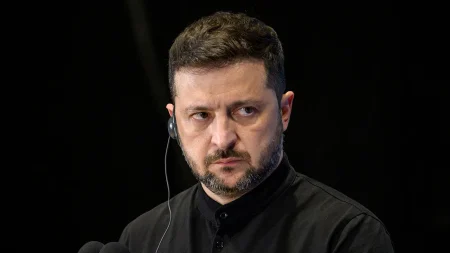The Caspian Sea air tragedy: A potential case of mistaken identity
On Wednesday, December 20th, tragedy struck the Caspian Sea as Azerbaijan Airlines Flight J2-8243, an Embraer 190 passenger jet en route from Azerbaijan to Russia, crashed near Aktau, Kazakhstan. The initial reports painted a grim picture with Kazakh authorities confirming a devastating loss of life. Out of 67 people on board, comprising 62 passengers and 5 crew members, 38 perished, leaving 29 injured survivors grappling with the aftermath of the horrific incident. The flight’s manifest revealed a diverse group of passengers, including 42 Azerbaijani citizens, 16 Russians, six Kazakhstanis, and three Kyrgyzstani nationals. Both pilots were among the casualties.
The flight’s deviation and the emerging narrative of potential misidentification
Adding to the complexity of the disaster was the revelation that the aircraft had veered significantly off its planned course, crashing on the opposite side of the Caspian Sea from its intended destination. While the official explanation for this drastic deviation remains pending, the incident coincided with drone strikes targeting southern Russia. This raised immediate concerns about the possibility of a connection. Previous drone activity in the region has led to airport closures, and the nearest Russian airport along the flight’s path was indeed closed on the morning of the crash.
These circumstances fueled speculation, and several sources pointed fingers at the possibility of an accidental downing by Russian air defense systems. Osprey Flight Solutions, an aviation security firm, posited that the aircraft was “likely shot down by a Russian military air-defense system,” citing video footage of the wreckage and the security environment in the region. This claim was echoed by Ukrainian national security official Andriy Kovalenko who, in a social media post, also attributed the crash to a “Russian air-defense system.” In contrast, Russia’s aviation watchdog suggested a bird strike as a possible cause for the emergency, a narrative that has yet to be substantiated by concrete evidence.
The human cost and the aftermath of grief and mourning
Video footage of the crash site depicted a scene of devastation: the plane descending rapidly before erupting into flames upon impact with the seashore. Thick black smoke billowed into the sky as bloodied and bruised survivors emerged from the wreckage. The immediate aftermath saw a scramble for medical assistance, with survivors being hospitalized, including two children.
The news of the crash sent shockwaves through Azerbaijan, prompting President Ilham Aliyev to cut short his trip to Russia, where he was scheduled to attend a meeting of leaders from former Soviet countries. Returning home, President Aliyev expressed his heartfelt condolences to the families of the victims and declared December 26th a national day of mourning. Azerbaijan Airlines also issued a statement expressing grief and solidarity with the victims and their families, changing its social media banners to black in a symbolic gesture of mourning.
The ongoing investigation and the search for definitive answers
As the investigation into the crash unfolds, the question of whether Flight J2-8243 was mistakenly targeted by Russian air defense systems remains central. The geopolitical context of ongoing regional tensions and the reported drone activity in the area adds another layer of complexity to the inquiry. Establishing the precise chain of events leading to the tragedy will be crucial in determining accountability and preventing similar incidents in the future.
The search for answers is not merely a technical exercise but a deeply human endeavor, intertwined with the grief and loss experienced by the families of the victims. The international community awaits the results of the investigation, hoping for clarity and closure amidst the lingering questions and profound sadness surrounding this devastating air disaster. The incident serves as a stark reminder of the fragility of life and the devastating consequences of conflicts, whether intended or accidental, in an increasingly interconnected world.















